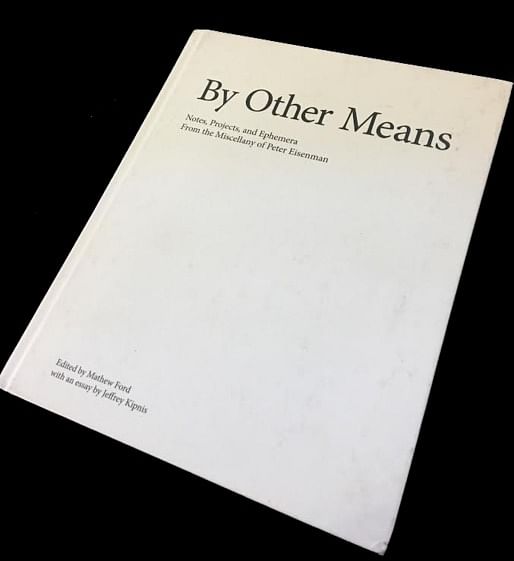
On September 30, The Knowlton School hosted a panel discussion between Peter Eisenman, Jeff Kipnis, and Matt Ford focusing on their contribution to the 15th Venice Architecture Biennale. The introduction, given by Mr. Ford, highlighted their curatorial goals of their exhibition, Eisenman’s struggle with the humanist tradition, and a brief overview of Eisenman’s work over the last five decades.
“By Other Means”, the title of their exhibition, follows Aravena’s theme of investigating the role of architects in improving living conditions for people around the world. The team focused on how Eisenman’s perhaps “lesser known” projects represent an example of activism in architecture. But in a vein unlike the goals of the Biennale laid out by Aravena, their exhibition did not aim to demonstrate how to cheapen the cost of buildings, analyze the responsibilities or ethics in architectural practice, or create mass social housing. Considering architecture doesn’t have a strong history of solving those types of social problems, Eisenman, Kipnis, and Ford sought to dispute the conceived norms of the professional practice. Ford continued by asserting that, “any architectural project that challenges the traditional relationship between the discipline and instantiated power can be considered a project of activism.”
Eisenman and Kipnis joined Ford and continued to discuss their process and thoughts on their exhibition. Kipnis started the conversation by saying, “We didn’t have an idea for the exhibition, what we had we had was an an idea to look--all over the place—in the warehouse and the office, and just find whatever we could find, and whatever is interesting, we will stick it on the wall.” And that’s exactly what happened. But what was interesting, was that this collection of work displayed that Eisenman goes against everything we know his architectural practice to stand for. For example, the Wexner Center brings together two grids- the city and the campus- in a new way of unity, the Yenikapi Project in Turkey, situated on four irreconcilable sites, all join together to create a new type of formal manipulation. Eisenman’s synagogue project, explained earlier by Ford, is located on a site surrounded by four different neighborhoods. The “Eisenman we know”, as dubbed by Jeff, would bring together these sites through a “complex calculus”. Instead, Eisenman states that the only way to design for this undesirable context was through “the atmosphere of unity and spirituality."
The idea of designing expressions in architecture that against centralized power continued throughout the conversation and into questions from the audience. “We are against making symbolic buildings that supposedly are for the good of the society. It’s a tricky line. Architecture uniquely faces the need to have a client.” Eisenman concluded by quoting his late mentor, Manfredo Tafuri, by saying, “All of the ideas of intellection and power are fine, but if you don’t build, no one will care about your ideas.”
After the panel discussion, the exhibition’s self-titled book was available for sale to the lecture attendees.

This blog will be a feeder for recent news, events and student work occurring at the Knowlton School at The Ohio State University. Posts will typically center around updates from the school's lecture series, exciting projects from recent student reviews and updates from other school events.



No Comments
Block this user
Are you sure you want to block this user and hide all related comments throughout the site?
Archinect
This is your first comment on Archinect. Your comment will be visible once approved.